Growing up on a South Wairarapa farmlet, Hana Brough of Bloom Fibre has always been surrounded by wool and wool crafts. “Keeping sheep meant a vast supply of our own wool. Even if it was slow, making useful things from scratch was incredibly rewarding especially when the materials were homegrown. I made the leap into hand weaving a few years ago as the next big adventure with fibre and haven’t looked back.”

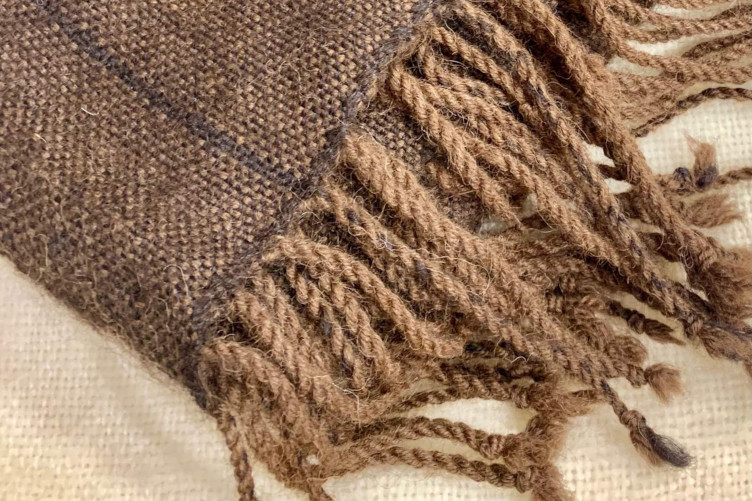
What do you make?
I make hand woven pieces ranging from large blankets, to small delicate scarves, to clothing and homewares. I have two large timber hand-weaving looms that I use to create my fabrics plus a small portable rigid heddle loom. Creating practical, functional pieces is what I am most passionate about – there is of course room for the artistic, but for me what I create needs to serve a purpose.
How did you get into your craft?
We had a small farm section in South Wairarapa growing up, that was maintained by our ‘pet’ sheep. We would get them shorn by a local farmer and even occasionally get the wool carded by a local carding factory in Greytown. There was plenty of wool to experiment with and we tried felting, dying and spinning with a DIY spinner made out of a spare sewing machine motor and wheel. And then tried knitting with mixed success. I guess the interest in wool stuck and as an adult found myself venturing into all sorts of fibre craft. I found weaving three years ago as sort of ‘the next great fibre adventure’ and I completely fell for it. For me it ticked all the boxes, as an avid sewer I thought I can make my own fabric! It’s well suited to natural fibre which I love, and looms have an engineering quality with their levers and pulleys which is another appeal.
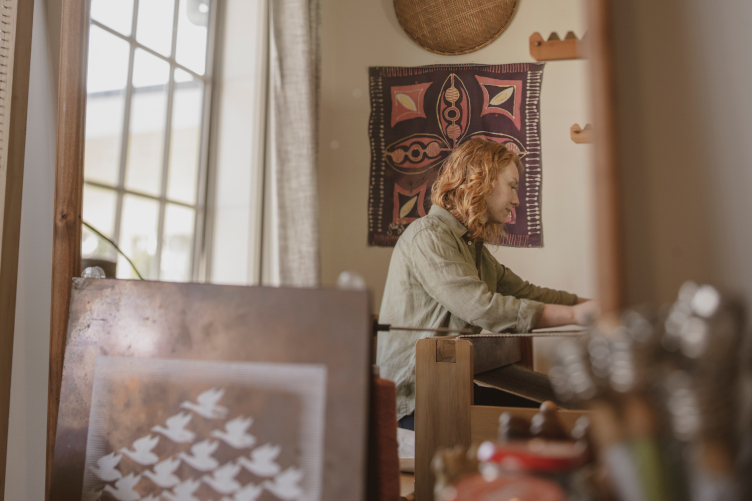

Do you have formal training or qualifications in your craft?
Nothing formal. I have taken a lesson with a Wellington weaver at her home – which is like a weavers’ paradise. I had just assembled my first floor loom and I needed a bit of guidance – you might follow all of the instructions on paper but weaving is such a practical thing sometimes you need the hands on practice.
I learnt so much in that one day. What to focus on, what’s critical and what’s more forgiving, what are the little things that will make a huge difference. It was such a confidence boost as much as technical lesson.
No other training, just reading lots of weaving books – when I can get them and reaching out to fellow weavers for advice.
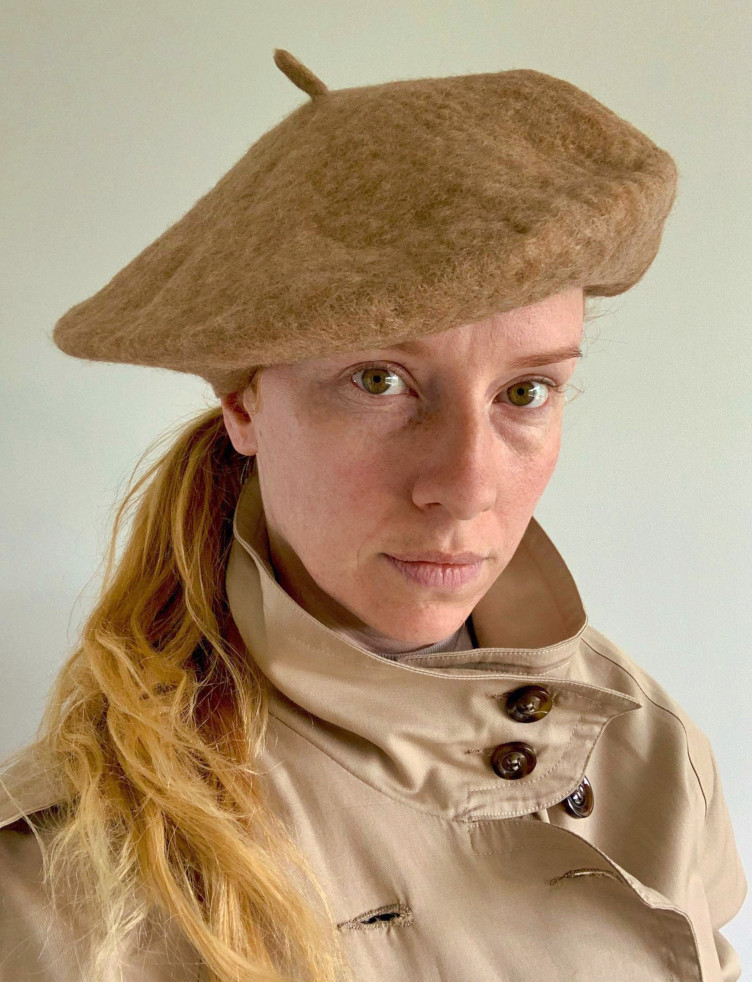

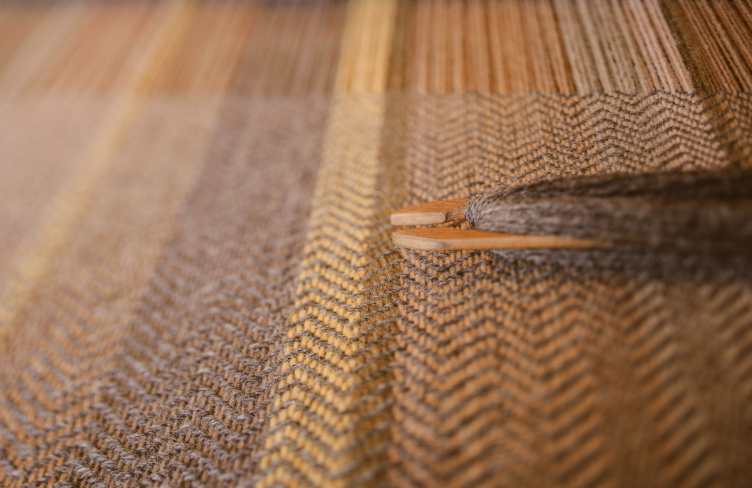
Your favourite materials, tools and processes?
Wool, wool, wool is still my absolute favorite material. It’s so versatile, strong but not too stretchy so you can pull up a really tight warp (the threads that run front to back through the loom) and still soft and feathery next to the skin. Boat shuttles are my favourite shuttles; particularly the ones from Ashfords (NZ) are just a great design. They carry the weft threads during weaving and most people are able to immediately identify them as a weaving instrument. I think that’s why I like them so much.
I love sharing hand weaving with people, a lot don’t know it still exists and think it’s only done on industrial machines. I bring my small loom with me when I attend markets and people are just fascinated to see it in action. Weaving is slow but so, so satisfying: the time spent in making is long, but it’s just a fraction of the time the piece will last for.
Tell us about some of the techniques involved in producing one of your pieces
There is quite a variety of steps to preparing the loom and weaving a piece, all with its own unique jargon I’m afraid.
Once you have an idea or a pattern you start with math! Calculating how long your piece will be, factoring in shrinkage, how many threads per inch across your warp will give you your number of threads and your total yarn requirement. Preparing the loom (dressing) with warp threads involves running out the warp, winding it evenly around a back beam, lots of threading through heddles (the loops that raise and lower your threads) and reed (the slotted bar that swings and pushes up your weft threads nice and tight). Once your threads are tied to the front beam you can start the actual weaving. And once you’re weaving it’s this total soothing, meditative action where your whole body is involved in working this contraption in unison. Your feet work pedals that select which threads are going up and down, you’re catching the shuttle in one hand and beating the weft threads up tight with the other and swapping back and forth.
You get into a rhythm, and you watch this amazing pattern emerge from bits of yarn – so satisfying! A loom is very much designed to fit the proportions of a person, and you feel so much a part of what you are creating.

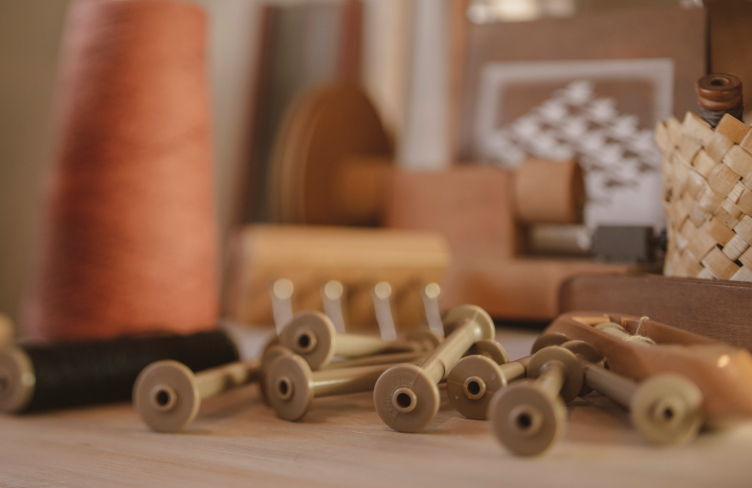
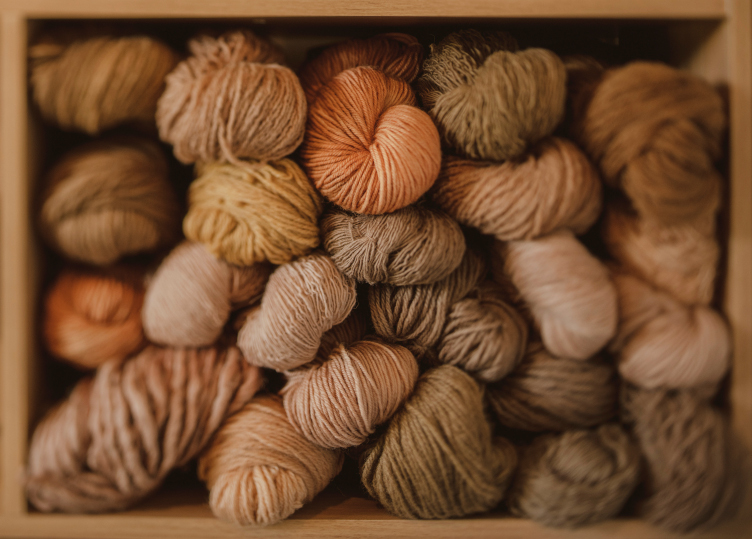
What inspires you?
History, I think. The history of weaving and how it transcends time and culture. Weaving is found throughout so many cultures and each one imparts their own style and techniques. When I see pieces from around the world, from antiquity, parents with babies clung to their backs while they weave in the forest, it’s completely inspiring and it makes me want to carry on my own little contribution to the weaving world.
Is there a philosophy behind your work?
My values lie in functional things. Creating for a purpose tends to mean things are never without use, and ultimately will get reused and repurposed or even passed on. Of course, I strive to create beautiful things as well, and dive into the technical skills and artistry but I always come back to function.
Creating using natural fibres and natural dyes has been an interest as well as a philosophy. Using natural things means they never really get wasted. They break down or get turned into something else – wool does make excellent mulch!
What has been a highlight of your maker journey so far?
Saying yes to sharing a market stall with my friend. She offered to share a stall as I didn’t have many of my own pieces and didn’t really have any gear let alone the confidence to do it. That was the start of my stall holder experience which has grown into my own set up and venturing out to new markets on my own. It is the highlight of my week going out to markets, talking with people and sharing weaving. I am overjoyed when I meet a fellow weaver, and could talk to them for hours. And I would have never made these connections without that initial push.
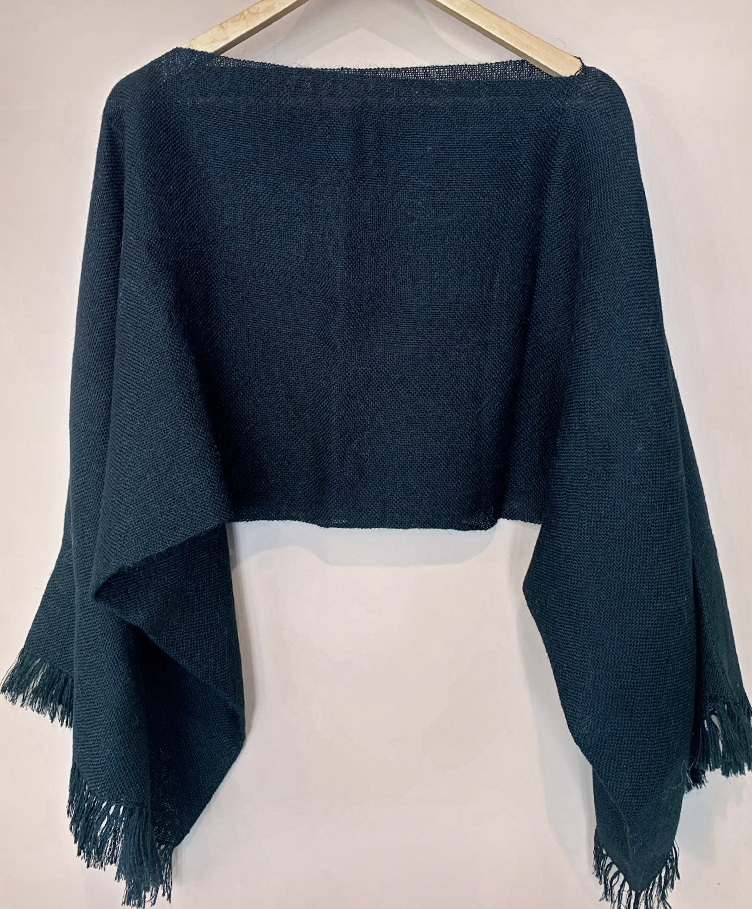

Describe your creative process
A good mix of ‘planning’ and ‘see how it goes’. You need to have a bit of a plan to start with, especially to avoid the heartbreak of running out of yarn mid project. But you can never quite tell how the threads and colours interact as a fabric until you get into it. I can’t help experimenting a bit during the weaving process, trying out different weft colours and yarn thicknesses. And if you are clever you can weave different patterns using the same threading, which is endlessly fun.
Describe your workspace
Cosy, eclectic, full of my favourite things. Basically, picture a timber-frame kids’ jungle gym the size of a small car (i.e my loom) squeezed into my spare room, with a bit of space left for a work bench/sewing table and bookshelf-come-yarn storage. Lots of yarn stashed away and my favourite bits and bobs on display.
Your favourite feedback from a customer
“One of a kind! Hand made and natural dyes! What’s not to love!?”
What’s your favourite childhood book and why?
The Folk of the Faraway Tree by Enid Blyton. Climbing to the top of a tree and ending up in different magical worlds, I still enjoy it as an adult. The characters were strange and peculiar and 100% okay with that.
Who is your hero/heroine? Why?
I am in total awe of Christine Brimer, the weaver I did my lesson with in Wellington. Sharing weaving like she does, opening up her home for lessons, and creating a business out of hand weaving. Her products are gorgeous and technically incredible. I very much hope some of that rubs off on me and I can keep up that level of quality.
A favourite quote
“Industrial scale isn’t a human scale.” This is something Paul Melser, a potter in the Wairarapa said in a short documentary about his craft and ethos and it has stuck with me.
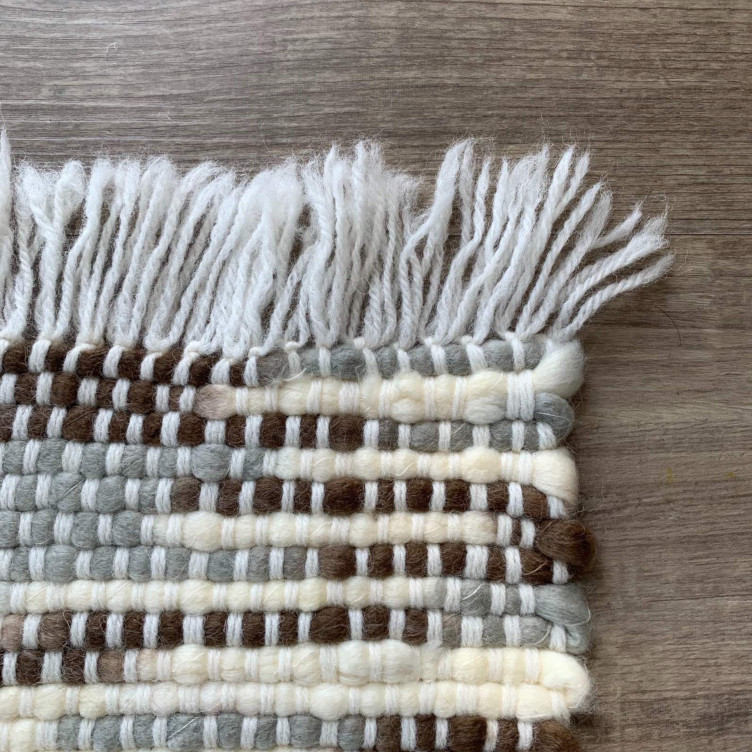
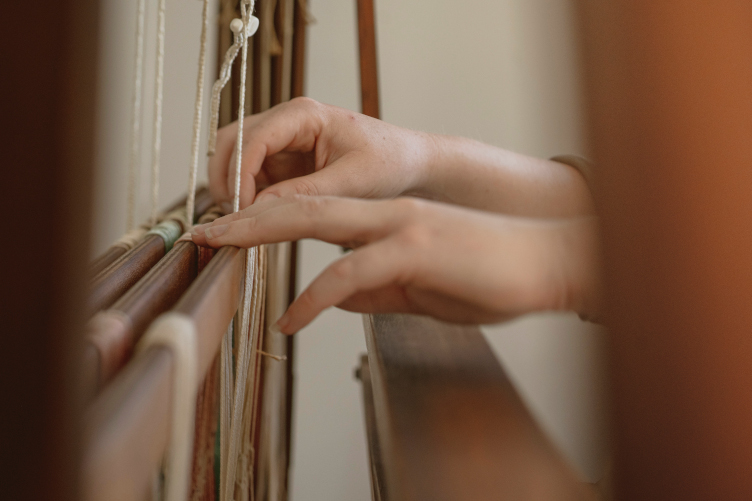
What would your advice be for those starting out in a crafty business?
You don’t need all the fancy business stuff if you don’t want. I found it quite intimidating seeing others with their professional-looking market stalls and their beautiful photos and websites – your product will win people over at the end of the day. I would say try to take the best product photos that you can, and to have at least one reliable way people can get in contact with you online.
Why do you think it’s important to buy handmade and/or locally made goods?
Supporting your community is a big one, but also to connect with people. Every piece has a story, and it brings so much life to an object when you talk with the maker and hear all about the struggles and wins of a piece. How many hours were spent or how it almost never came to be.
What does it mean to you when someone buys your creations?
Validation, gratitude. When someone isn’t just giving you compliments on your work (which is also exceptionally nice) but backing it up with a purchase, it’s amazing. I can’t get over how something I made was just what someone was looking for, they were prepared to pay for my creation and now they use it in their home or wear it, it’s so cool.
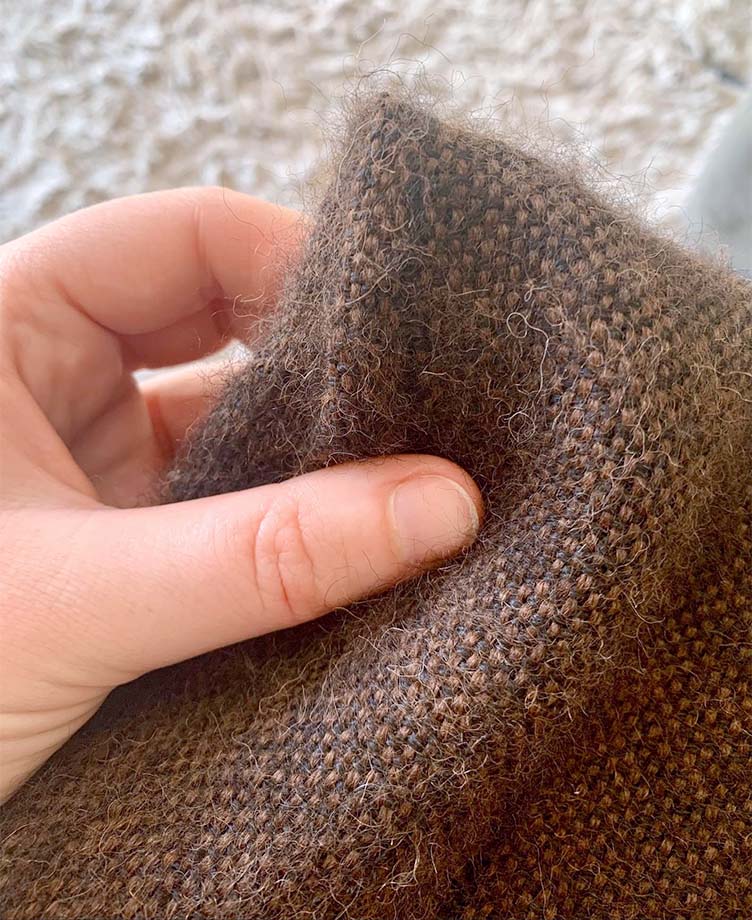
What was the last handmade item you bought and what attracted you to it?
Wool, of course! A few gorgeous skeins from a talented local natural dyer. The most amazing bright pink – a colour from ground up bugs! I dabble in natural dying yarn myself, but I cannot get colours like Rosemarie from Rose Spud Yarns.
What’s in store for the rest of 2022?
Lots more market days hopefully. Technically I’m excited to progress more and more into weaving for clothing. Either cutting into handwoven fabric and sewing – eeeek! – or getting clever and weaving whole garments on the loom with woven-in joins and slits. Lots more experimentation and exploration, lots of different fibres – I don’t think I will ever run out of weaving project ideas. ?
Hana’s next market will be Saturday 16th April at Stella Bull Park (next to the White Swan) in Greytown, from 10am to 2pm.
See more from Bloom Fibre here »

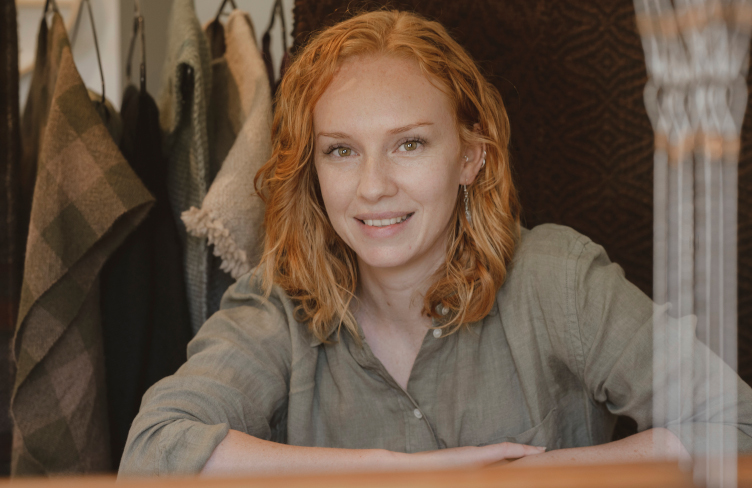





Wow Hana your weaving is amazing . Well done xx love you